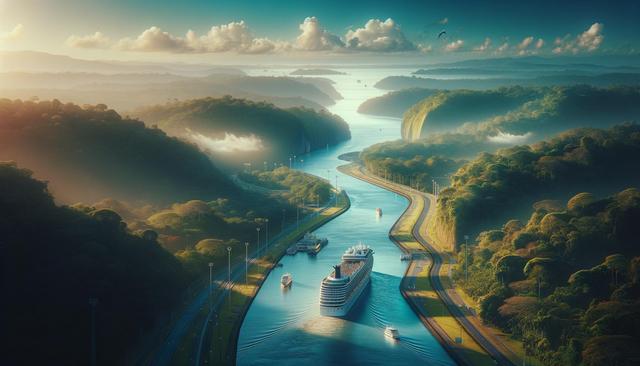Understanding the Panama Canal Cruise Journey
The Panama Canal stands as a testament to human ingenuity, connecting the Atlantic and Pacific Oceans through a 50-mile stretch of locks and waterways. Cruises that include this passage offer a unique blend of maritime history, scenic beauty, and diverse cultural experiences. Unlike traditional ocean cruises, a Panama Canal itinerary is defined by the canal transit itself, often taking travelers through lush rainforests, vibrant ports, and diverse marine ecosystems. The cruise may include stops in Central American countries, the Caribbean, or even the western coasts of North or South America, depending on the route.
These cruises typically range from 10 to 15 days, though longer itineraries are available for those seeking a more comprehensive journey. They cater to travelers interested in historical insights, engineering marvels, and nature-rich shore excursions. With airfare included, the complexity of planning long-distance travel is significantly reduced, making it easier for guests to focus on the voyage itself.
The Added Value of Airfare-Inclusive Packages
Choosing a Panama Canal cruise that includes airfare can simplify your travel arrangements and often results in cost efficiencies. These bundled packages are designed to offer convenience and value, particularly when international flights are involved. Cruise lines frequently arrange departures from major cities, ensuring access for a broad range of travelers. Benefits of such packages include:
- Pre-arranged flights matched to cruise departure and return dates
- Transportation between the airport and cruise port
- Potentially lower overall travel costs when booked as a bundle
- Assistance with flight changes or delays through cruise support teams
For travelers unfamiliar with the logistics of multi-country travel, these inclusive options remove much of the guesswork. Furthermore, having flights managed by the cruise provider can offer peace of mind, especially if any schedule changes occur.
Popular Itineraries and Ports of Call
Panama Canal cruise itineraries vary depending on the embarkation point and cruise line, but several routes have gained popularity among travelers. Some begin on the U.S. West Coast, passing through Mexico and Central America before transiting the canal. Others might depart from the East Coast or the Caribbean, offering a partial or full crossing. Common ports of call include:
- Cartagena, Colombia – known for its colonial architecture and coastal charm
- Puntarenas, Costa Rica – offering access to rainforests and wildlife tours
- Colon, Panama – a key hub for canal-related excursions
- Puerto Quetzal, Guatemala – gateway to Mayan ruins and volcanoes
Each destination adds cultural and ecological richness to the cruise, making the journey more than just a canal crossing. These stops provide opportunities for guided tours, local cuisine exploration, and adventure activities like ziplining or snorkeling.
What to Expect Onboard
Onboard experiences during a Panama Canal cruise are as diverse as the destinations themselves. Many ships offer enrichment programs that include lectures on canal history, regional ecology, and local cultures. These programs enhance the sense of place and give deeper meaning to the canal transit, often considered a highlight of the trip. Typical onboard amenities include:
- Observation decks for optimal viewing during canal passage
- Dining options featuring regional flavors
- Wellness and spa facilities for relaxation
- Live entertainment and cultural performances
Passengers can expect detailed commentary during the canal transit, helping to demystify the complex lock system and the history behind its construction. From sunrise views of the locks to jungle-lined coastal scenes, the canal experience is both educational and visually stunning.
Tips for Booking and Preparation
When planning a Panama Canal cruise with airfare included, a few considerations can enhance your travel experience. Firstly, book in advance to secure your preferred itinerary and cabin type, as these cruises can be in high demand during peak seasons. Secondly, review the included airfare details carefully—some packages allow for flight customization, while others may have fixed arrangements. Here are additional tips:
- Check visa requirements for all countries on the itinerary
- Pack lightweight clothing and rain gear for tropical climates
- Consider travel insurance, especially for longer trips
- Bring binoculars for wildlife viewing during the canal transit
Being prepared helps ensure a smooth and enjoyable cruise experience. Also, consult your cruise provider about optional pre- or post-cruise extensions that may allow you to explore more of Central America or neighboring regions.


